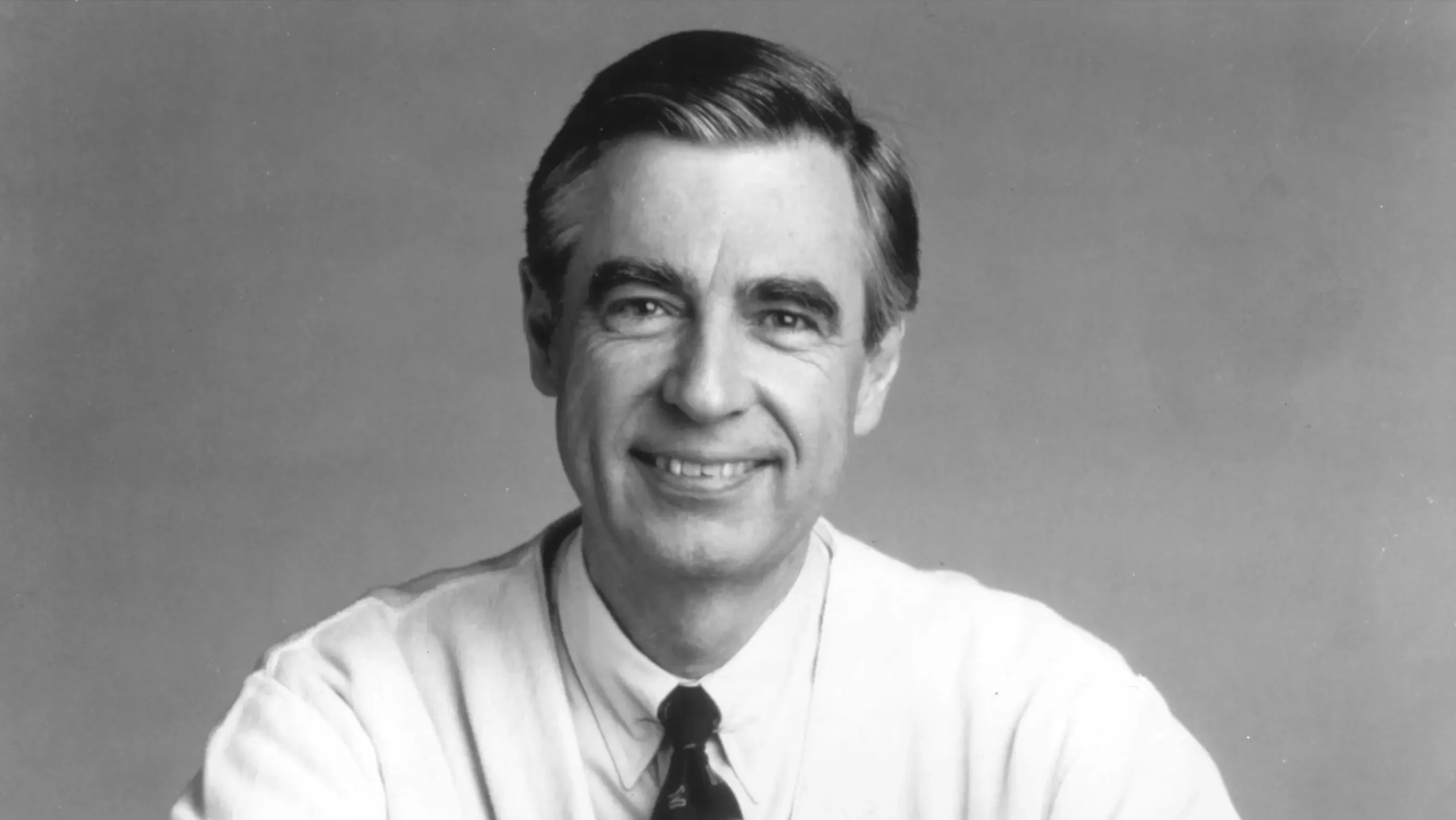James Byrd Rogers: Revealing Mr Rogers’ Son’s Life Story
- 1 Neighbourhood Rebellion
- 2 New Generation and Reconciliation
- 3 Mister Rogers’ Real Story: Uncoveries from Outside the Neighbourhood
- 4 Puppetry Show for a Patient in Coma
- 5 Myth’s Man Behind It
- 6 The Antiquated Cold War Episodes
- 7 Asking Officer Clemmons to Remain in the Closet
- 8 Family Perspectives
- 9 Why Sweaters and Sneakers Matter
- 10 Strictly Designed Simplicity
- 11 Conclusion
Millions of people considered Fred Rogers more than simply a television celebrity; he was a cherished neighbour to many generations of kids, a surrogate father figure, and a lighthouse of compassion. Meanwhile, Rogers’ family struggled to maintain his immaculate reputation behind the scenes. James Byrd Rogers, his oldest son, was among them. It was a circuitous path marked by self-discovery and rebellion to accept his father’s legacy.
Neighbourhood Rebellion
James Byrd Rogers was born in 1959 and grew up in the cosy embrace of Mister Rogers’ Neighbourhood, occasionally appearing as a youngster. But as he got older, the burden of his father’s legendary position started to weigh down on him. In interviews, Rogers’ parents said that James, having left for college, rebelled against his upbringing and even temporarily cut off contact with them.
‘He has portrayed his father as a second Christ,’ an impossible standard to live up to,’ one story says. Many people who were up idolising their parents and then discovered the pedestal they had been set on was much too high to climb can relate to this feeling.
New Generation and Reconciliation
Thankfully, James Byrd Rogers was not permanently cut off from his family. His son Alexander was there when he triumphantly returned to Mister Rogers’ Neighborhood in 1989. Three generations of Rogers men graced the scene, a moving reminder that family ties can survive even in the face of disobedience.
James Byrd has left the public eye his father inhabited for many years and now leads a comparatively quiet life with his family. In his contributions to the 2018 documentary “Won’t You Be My Neighbour?”, he gave a rare look inside his relationship with the legendary TV presenter. Still, overall, he has decided to forge his career free from the burden of his father’s legacy.
Mister Rogers’ Real Story: Uncoveries from Outside the Neighbourhood
Though Fred Rogers may have appeared to be the epitome of perfection to his millions of viewers, the years following his death in 2003 have revealed a more complex picture of the man behind the red jumper. From heartwarming deeds of generosity to unexpected disclosures about his personal challenges, Mister Rogers’ legacy is still developing and captivating new generations.
Puppetry Show for a Patient in Coma
The story of Beth Usher, a youngster with a rare brain condition that resulted in up to 100 seizures a day, is among the most moving to come out in recent years. As Usher’s mother related to Today in 2018, Rogers went over and beyond to console the sick youngster.
Rather than sending Usher an autographed photo as asked, Rogers spoke with her for an hour about her worries and favourite show puppets. After brain surgery left Usher in a coma, Rogers went from Pittsburgh to Baltimore to see her. He gave the unconscious youngster her favourite puppets and made her “the star in his neighbourhood” for an hour. Their relationship was to endure a lifetime.
Myth’s Man Behind It
Though many view Rogers as a contemporary saint because of his unselfish deeds, his widow Joanne warned against this idolatry. The director of “Won’t You Be My Neighbour?” interviewed her, and she said her husband “wouldn’t have wanted such high praise.”
“Fred struggled often against people who didn’t take him seriously and understand the profundity of his message,” she remarked. “A saintly treatment keeps him two-dimensional. His purpose was to convey to us that everyone struggles and that he is not a being from another planet.”
The Antiquated Cold War Episodes
Rogers was not hesitant to address complex subjects in a way that kids could grasp, even with all his gentle knowledge. In 1983, he addressed the tensions of the Cold War through a five-part allegory about the spread of weapons, titled the “conflict series.” However, these programmes were removed from syndication and were not seen by the general public for over 33 years.
The series’ first public viewing of two complete episodes since their premiere was marked in March 2017 when they unexpectedly appeared on YouTube. The episodes, which told a sobering story of the perils of unbridled militarization, served as a moving reminder of Rogers’ dedication to respectfully and empathetically tackling challenging themes.
Asking Officer Clemmons to Remain in the Closet
Even if Rogers promoted acceptance and diversity, his own perspective on society’s problems changed with time. The show’s neighbourhood policeman, played by actor François Clemmons, related a sobering story about his friendship with Rogers in a candid interview with the New York Post.
Clemmons said that Rogers had first asked him to remain in the closet since he was a gay man during a time when homosexuality was still highly stigmatised and feared the reaction from conservative listeners. Though he obeyed, even going so far as to wed a woman, Clemmons had no grudges against Rogers, whom he considered a “surrogate father.”
“Nobody ever expressed such a profound sense of protection for me,” Clemmons said. Rogers’ opinions changed over time, and as evidence of his ability to develop and be understanding, he started having openly gay guests on his show.
Family Perspectives
For those closest to Fred Rogers, his public presence was but one aspect of a complicated and multidimensional person. His family gave rare looks into Rogers’ life behind the jumper in the 2018 documentary ‘Won’t You Be My Neighbour?
His spouse Joanne related how, long before his famous programme debuted, Rogers wrote her a letter in the most distinctly “Mister Rogers” manner possible. Their son James disclosed that Rogers would use Lady Elaine Fairchilde, his often sour puppet, to express his rage.
Rogers’ puppets, according to Joanne, represented various facets of his personality; the naive and adorably insecure Daniel Striped Tiger represented his fears and sadness. Even the most adored characters struggle with inner turmoil, as these personal disclosures humanised the man who had been a constant in many childhoods.
Why Sweaters and Sneakers Matter
For many years, Mister Rogers’ Neighbourhood began with a beloved ritual in which Rogers would hang up his jacket, put on a sweater and replace his loafers with trainers while belting out his famous song. However, fewer people knew the underlying significance of these small actions.
The Fred Rogers Company said young viewers felt safe because of this routine’s consistency. Donning a jumper symbolised switching from business to play, and Rogers could move more subtly about the set thanks to the more laid-back vibe generated by the trainers.
Because Rogers’ mother had knitted the sweaters originally as a token of her affection, they themselves had sentimental meaning. The show crew carried on the custom after her death, buying and dying like sweaters to ensure that the cosiness and familiarity of those famous red cardigans never went away.
Strictly Designed Simplicity
Beneath the easy appeal of Mister Rogers’ Neighborhood was a well-considered strategy for interacting with kids. Rogers consulted Margaret McFarland, a child psychologist whose focus on empathy and storytelling greatly impacted the show’s scripts.
Understanding that a youngster’s mentality was literal, Rogers made a tremendous effort to make sure his terminology was clear. To prevent any inadvertent connections with explosions, he would alter a screenplay that called for “blowing up a balloon” to “puffing up.” The show’s writers dubbed this meticulousness “Freddish” to characterise Rogers’ guidelines for interacting with kids. Also crucial was consistency; Rogers insisted on reshooting sequences if even the tiniest details—like the tram going the opposite way—were off. However, he also accepted imperfection, leaving intakes when he mispronounced a word or lyric to show that even grownups fail.
Conclusion
There is little denying Fred Rogers’ influence on subsequent generations of kids and families. By his ground-breaking television programme, he imparted priceless lessons in self-acceptance, empathy, and kindness. Over time, though, we’ve realised that the man in the red jumper was just as human as the rest of us.
Rogers’ tale reminds us that even the most adored people are not exempt from the complexity of life, from his son’s early rebellion against the weight of his father’s legacy to the personal issues he battled in private. Though Rogers exemplified the precise principles he aimed to teach, it is possible that his real brilliance resided in his shortcomings.
Let us honour his life and work on the values he upheld and the path he travelled to achieve them. In doing so, we respect the deep wisdom at the core of his message: that every person, no matter how seemingly ordinary, can be a neighbour, a healer, and an assistant to others around them.
FAQs
What kind of relationship did James Byrd Rogers and his father have?
Fred Rogers’ older son, James Byrd Rogers, had a complicated relationship with his father. After fighting against his father’s legendary position, he finally made amends with him and even made an emotional three-generational appearance on Mister Rogers’ Neighbourhood with his kid.
Following Fred Rogers’ death, what new information surfaced?
In the years after Rogers’ passing, many touching and unexpected accounts emerged that revealed his deeds of generosity, personal hardships, and changing views on social concerns like homosexuality.
Why did Mister Rogers’ Neighbourhood have sneakers and sweaters?
For Rogers, the custom of dressing in a jumper and trainers at the beginning of every episode had a deeper significance. Initially crocheted by his mother, the sweaters provided stability, while the trainers relaxed the mood and let him wander about the set in peace.
How did Fred Rogers handle their communication?
Rogers worked with specialists and child psychologists to create scripts that were painstakingly consistent in terminology. He called his communication style “Freddish” because he wanted to be clear and direct.

















